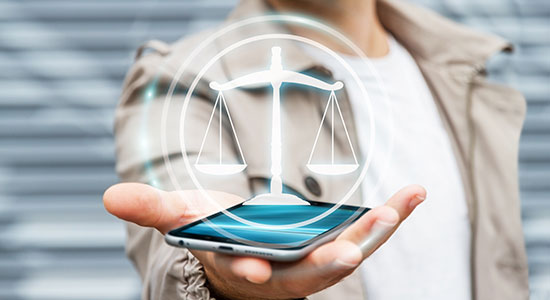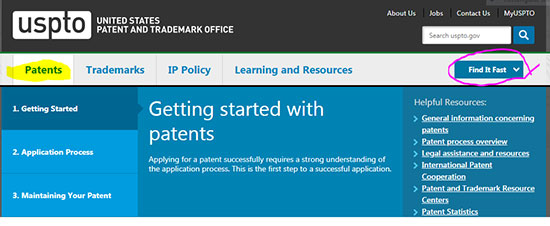
Feb. 6, 2019 – Wisconsin is home to complex technological innovation and economic development. Its institutes of higher education spur economic growth through research and innovation of game-changing technologies and the local companies that license these innovations and bring them to market.
Our intellectual property landscape is robust in Wisconsin – giving lawyers the opportunity to expand their practice into this complex area.
At the heart of intellectual property are patents. This article focuses on patent resources and provide a few tips on finding quick and easy resources.
About Patents
In a nutshell, intellectual property law covers patents, trademarks, and copyrights. Types of U.S. patents include:
- utility (machine, article of manufacture, process, or composition of matter);
- design (ornamental design - only the appearance is protected); and
- plant (new, asexually reproduced plants).
Patents are property rights of limited time, and are granted in exchange for the inventor to fully disclose their invention to the public. They are used to protect ideas and inventions, but they are also used to encourage new investments in new technologies and bring new avenues to the marketplace for these technologies.
 Sandra Whitney is an intellectual property legal assistant at Quarles & Brady. She is a member of Law Librarians Association of Wisconsin (LLAW), a chapter of the American Association of Law Libraries.
Sandra Whitney is an intellectual property legal assistant at Quarles & Brady. She is a member of Law Librarians Association of Wisconsin (LLAW), a chapter of the American Association of Law Libraries.
The United States Patent and Trademark Office (USPTO) is the U.S. federal agency for granting U.S. patents and registered trademarks. In doing this, the USPTO fulfills the mandate of Article I, Section 8, Clause 8, of the Constitution, that the legislative branch "promote the Progress of Science and useful Arts, by securing for limited Times to Authors and Inventors the exclusive Right to their respective Writings and Discoveries."
Under this system of protection, American industry flourishes. New products are invented, new uses for old ones discovered, and employment opportunities created for millions of Americans.
For an invention to be patented it must be:
- new;
- useful;
- non-obvious; and
- include a description of how to make and use the invention.
Searching for Prior Art
“Prior art” means the state of the art. It is information used when shaping a patent claim. Prior art is information disclosed to the public, including:
- U.S. patents and patent applications;
- foreign patents and published patent applications;
- journal and magazine articles;
- books, manuals, and catalogs;
- websites and databases;
- genome sequencing; and
- conference proceedings.
In most cases, searching prior art requires high-level technical specialty to map prior art to a patent claim. Ideas and inventions are often in the realm of indescribable or have structures or processes in the micro or nanometer range.
Expert knowledge of the technical, commercial, and legal landscape is necessary to develop a powerful IP strategy. A professional with expert knowledge in this landscape can also assist with key commercial decisions including whether the art currently exists, whether to keep proprietary information secret, or whether to apply for a patent (creating a temporary monopoly right for that invention).
To gain a high-level view of the patent landscape, there are resources we can access that are not behind fiscal and proprietary paywalls (i.e., that are reliable and free to use).
Start with the United States Patent and Trademark Office Website
USPTO is a one-stop shop to search for patents and patents forms, as well as laws, regulations, policies, procedures, guidance, and training.
USPTO’s intellectual property eLearning modules provide videos and other tools that assist with patent information and prosecution. Take a look at “Introduction of Patent Protection” (a 26 minute video) for an introduction to what a patent is, what a patent protects, and how a patent is obtained in the United States.
How to Conduct a Preliminary U.S. Patent Search: A Step by Step Strategy is another useful training video from USPTO.
On the USPTO website, find the dropdown link, Find It Fast, for links to search U.S. patents and published patent applications, and USPTO forms, and to search recorded assignments and the Manual of Patent Examining Procedure (MPEP).

Once a patent application is filed, it is not made public for 18 months. The patent application becomes public after the examiner grants the application.
Search the USPTO Public PAIR for comprehensive information behind a U.S. published patent application and issued patent. The image file wrapper shows, in reverse chronological order, the life of the patent application (from the initial filing to notice of publication). The Assignments tab displays assignors/assignees and correspondent (typically the law firm representing the applicant). Continuity data show parent and continuation data.
More Resources
Google Patents has more than 87 million patent publications from 17 patent offices around the world, as well as many more technical documents and books indexed in Google Scholar and Google Books. It’s a useful and easy first stop for searching and researching patents and published patent applications, and prior art.
The World Intellectual Patent Organization (WIPO) oversees international patent applications filed under the Patent Cooperation Treaty (PCT). Use WIPO Patentscope to search international and national patent collections.
Espacenet offers worldwide coverage and simple search features, and free access to information about inventions and technical developments from 1836 to today. This website also provides excellent learning tools. Search Espacenet for foreign patents documents from around the world. For a quick overview of Escapenet, see this three-minute video.
If you know the U.S. patent number of your research subject, use pat2pdf to obtain a PDF copy of the patent. This is a free retrieval tool (for U.S. patents only).
Additional Resources
Intellectual Property in Wisconsin is a single-volume treatise published by State Bar of Wisconsin PINNACLE®. For patents, the resource outlines the various types of patentable subject matter, strategy on application issues, and handling scenarios involving joint inventors. Need to know the importance and purpose of documenting the invention? The book provides detailed guidance on corroborating the inventor’s activities in establishing the act of invention. It is available online through WisBar’s Marketplace in print and digitally via Books Unbound, as well as through the U.W. Law Library and the Wisconsin State Law Library.
The U.W. Law Library - Patent Law Guide and the Wisconsin State Law Library Patent & Trademarks websites provide links to resources on patent law, patent searching, and patent associations. Included are tutorials and learning tools.
The intellectual property landscape can be a complex highway to navigate, and these authoritative and easy-to-use resources should help you start your research process.
